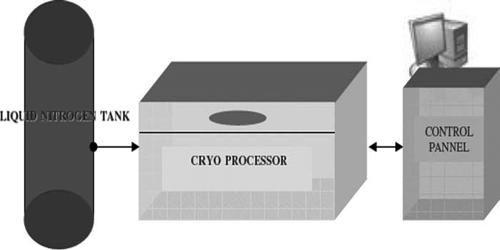Recycling of Footwear Wastages
Recycling involves processing used materials into new products to prevent waste of potentially useful materials, reduce the consumption of fresh raw materials, reduce energy usage, reduce air pollution (from incineration) and water pollution (from land filling) by reducing the need for “conventional” waste disposal, and lower greenhouse gas emissions as compared to virgin production. Recycling is a key component of modern waste reduction and is the third component of the “Reduce, Reuse, and Recycle” waste hierarchy.
Recyclable materials include many kinds of glass, paper, metal, plastic, textiles, and electronics. Although similar in effect, the composting or other reuse of biodegradable waste – such as food or garden waste – is not typically considered recycling. Materials to be recycled are either brought to a collection center or picked up from the curbside, then sorted, cleaned, and reprocessed into new materials bound for manufacturing.
In a strict sense, recycling of a material would produce a fresh supply of the same material, for example used office paper to more office paper, or used foamed polystyrene to more polystyrene. However, this is often difficult or too expensive (compared with producing the same product from raw materials or other sources), so “recycling” of many products or materials involve their reuse in producing different materials (e.g., paperboard) instead. Another form of recycling is the salvage of certain materials from complex products, either due to their intrinsic value (e.g., lead from car batteries, or gold from computer components), or due to their hazardous nature (e.g., removal and reuse of mercury from various items).
Critics dispute the net economic and environmental benefits of recycling over its costs, and suggest that proponents of recycling often make matters worse and suffer from confirmation bias. Specifically, critics argue that the costs and energy used in collection and transportation detract from (and outweigh) the costs and energy saved in the production process; also that the jobs produced by the recycling industry can be a poor trade for the jobs lost in logging, mining, and other industries associated with virgin production; and that materials such as paper pulp can only be recycled a few times before material degradation prevents further recycling. Proponents of recycling dispute each of these claims, and the validity of arguments from both sides has led to enduring controversy.
Process
The process of recycling involves the following steps:
Collection
A number of different systems have been implemented to collect recyclates from the general waste stream. These systems tend to lie along the spectrum of trade-off between public convenience and government ease and expense. The three main categories of collection are “drop-off centers”, “buy-back centers” and “curbside collection”.
Drop-off centers require the waste producer to carry the rescales to a central location, either an installed or mobile collection station or the reprocessing plant itself. They are the easiest type of collection to establish, but suffer from low and unpredictable throughput. Buy-back centers differ in that the cleaned rescales are purchased, thus providing a clear incentive for use and creating a stable supply. The post-processed material can then be sold on, hopefully creating a profit. Unfortunately government subsidies are necessary to make buy-back centers a viable enterprise, as according to the United States Nation Solid Wastes Management Association it costs on average US$50 to process a ton of material, which can only be resold for US$30.
At one end of the spectrum is mixed waste collection, in which all rescales are collected mixed in with the rest of the waste, and the desired material is then sorted out and cleaned at a central sorting facility. This results in a large amount of recyclable waste, paper especially, being too soiled to reprocess, but has advantages as well: the city need not pay for a separate collection of rescales and no public education is needed. Any changes to which materials are recyclable is easy to accommodate as all sorting happens in a central location.
In a Commingled or single-stream system, all recyclables for collection are mixed but kept separate from other waste. This greatly reduces the need for post-collection cleaning but does require public education on what materials are recyclable.
Source separation is the other extreme, where each material is cleaned and sorted prior to collection. This method requires the least post-collection sorting and produces the purest rescales, but incurs additional operating costs for collection of each separate material. An extensive public education program is also required, which must be successful if recycled contamination is to be avoided.
Source separation used to be the preferred method due to the high sorting costs incurred by commingled collection. Advances in sorting technology (see sorting below), however, have lowered this overhead substantially—many areas which had developed source separation programs have since switched to commingled collection.
Sorting
Once commingled rescales are collected and delivered to a central collection facility, the different types of materials must be sorted. This is done in a series of stages, many of which involve automated processes such that a truck-load of material can be fully sorted in less than an hour. Some plants can now sort the materials automatically, known as single-stream recycling. A 30 percent increase in recycling rates has been seen in the areas where these plants exist.Initially, the commingled rescales are removed from the collection vehicle and placed on a conveyor belt spread out in a single layer. Large pieces of corrugated fiberboard and plastic bags are removed by hand at this stage, as they can cause later machinery to jam.
Next, automated machinery separates the rescales by weight, splitting lighter paper and plastic from heavier glass and metal. Cardboard is removed from the mixed paper, and the most common types of plastic, PET (#1) and HDPE (#2), are collected. This separation is usually done by hand, but has become automated in some sorting centers: a spectroscopic scanner is used to differentiate between different types of paper and plastic based on the absorbed wavelengths, and subsequently divert each material into the proper collection channel.
Strong magnets are used to separate out ferrous metals, such as iron, steel, and tin-plated steel cans (“tin cans”). Non-ferrous metals are ejected by magnetic eddy currents in which a rotating magnetic field induces an electric current around the aluminum cans, which in turn creates a magnetic eddy current inside the cans. This magnetic eddy current is repulsed by a large magnetic field, and the cans are ejected from the rest of the recycled stream.
Treatments
The sorted materials are then treated as their physical and chemical properties and as the product desired.
Reuse
Reuse is to use an item more than once. This includes conventional reuse where the item is used again for the same function, and new-life reuse where it is used for a new function. In contrast, recycling is the breaking down of the used item into raw materials which are used to make new items. By taking useful products and exchanging them, without reprocessing, reuse help save time, money, energy, and resources. In broader economic terms, reuse offers quality products to people and organizations with limited means, while generating jobs and business activity that contribute to the economy.
Historically, financial motivation was one of the main drivers of reuse. In the developing world this driver can lead to very high levels of reuse, however rising wages and consequent consumer demand for the convenience of disposable products has made the reuse of low value items such as packaging uneconomic in richer countries, leading to the demise of many reuse programs. Current environmental awareness is gradually changing attitudes and regulations, such as the new packaging regulations, are gradually beginning to reverse the situation.
The classic example of conventional reuse is the doorstep delivery of milk in refillable bottles; other examples include the rethreading of tires and the use of reusable plastic boxes (transit packing) instead of single-use cardboard cartons.
Advantages & disadvantages
Reuse has certain potential advantages:
- Energy and raw materials savings as replacing many single use products with one reusable one reduces the number that need to be manufactured.
- Reduced disposal needs and costs.
- Refurbishment can bring sophisticated, sustainable, well paid jobs to underdeveloped economies.
- Cost savings for business and consumers as a reusable product is often cheaper than the many single use products it replaces.
- Some older items were better handcrafted and appreciate in value.
Disadvantages are also apparent:
- Reuse often requires cleaning or transport, which have environmental costs.
- Some items, such as freon appliances or infant auto seats, could be hazardous or less energy efficient as they continue to be used.
- Reusable products need to be more durable than single-use products, and hence require more material per item. This is particularly significant if only a small proportion of the reusable products are in fact reused.
- Sorting and preparing items for reuse takes time, which is inconvenient for consumers and costs money for businesses?
Comparison to recycling
Recycling differs from reuse in that it breaks down the item into raw materials which are then used to make new items, as opposed to reusing the intact item. As this extra processing requires energy, as a rule of thumb reuse is environmentally preferable to recycling (“reduce, reuse, recycle”), though recycling does have a significant part to play as it can often make use of items which are broken, worn out or otherwise unsuitable for reuse. However, as transport emissions are significant portion of the environmental impact of both reuse and recycling, in some cases recycling is the more prudent course as reuse can require long transport distances. A complex life cycle analysis may be required during a products design phase to determine the efficacy of reuse, recycling, or neither, and produce accordingly.
Landfill
A landfill, also known as a dump or rubbish dump (and historically as a maiden), is a site for the disposal of waste materials by burial and is the oldest form of waste treatment. Historically, landfills have been the most common methods of organized waste disposal and remain so in many places around the world.
Landfills may include internal waste disposal sites (where a producer of waste carries out their own waste disposal at the place of production) as well as sites used by many producers. Many landfills are also used for other waste management purposes, such as the temporary storage, consolidation and transfer, or processing of waste material (sorting, treatment, or recycling).
A landfill also may refer to ground that has been filled in with soil and rocks instead of waste materials, so that it can be used for a specific purpose, such as for building houses. Unless they are stabilized, these areas may experience severe shaking or liquefaction of the ground in a large earthquake.
Operations
Typically, in non hazardous waste landfills, in order to meet predefined specifications, techniques are applied by which the wastes are:
- Confined to as small an area as possible.
- Compacted to reduce their volume.
- Covered (usually daily) with layers of soil.
During landfill operations the waste collection vehicles are weighed at a weighbridge on arrival and their load is inspected for wastes that do not accord with the landfill’s waste acceptance criteria. Afterwards, the waste collection vehicles use the existing road network on their way to the tipping face or working front where they unload their load. After loads are deposited, compactors or dozers are used to spread and compact the waste on the working face.
Before leaving the landfill boundaries, the waste collection vehicles pass through the wheel cleaning facility. If necessary, they return to the weighbridge in order to be weighed without their load. Through the weighing process, the daily incoming waste tonnage can be calculated and listed in databases. In addition to trucks, some landfills may be equipped to handle railroad containers. The use of ‘rail-haul’ permits landfills to be located at more remote sites, without the problems associated with many truck trips.
Typically, in the working face, the compacted waste is covered with soil daily. Alternative waste-cover materials are several sprayed-on foam products and temporary blankets. Blankets can be lifted into place with tracked excavators and then removed the following day prior to waste placement. Chipped wood and chemically ‘fixed’ bio-solids, may also be used as an alternate daily cover. The space that is occupied daily by the compacted waste and the cover material is called a daily cell. Waste compaction is critical to extending the life of the landfill. Factors such as waste compressibility, waste layer thickness and the number of passes of the compactor over the waste affect the waste densities.
Impacts
A large number of adverse impacts may occur from landfill operations. These impacts can vary: fatal accidents (e.g., scavengers buried under waste piles); infrastructure damage (e.g., damage to access roads by heavy vehicles); pollution of the local environment (such as contamination of groundwater and/or aquifers by leakage and residual soil contamination during landfill usage, as well as after landfill closure); offgassing of methane generated by decaying organic wastes (methane is a greenhouse gas many times more potent than carbon dioxide, and can itself be a danger to inhabitants of an area); harbouring of disease vectors such as rats and flies, particularly from improperly operated landfills, which are common in Third-world countries; injuries to wildlife; and simple nuisance problems (e.g., dust, odour, vermin, or noise pollution).
Environmental noise and dust are generated from vehicles accessing a landfill as well as from working face operations. These impacts are best to intercept at the planning stage where access routes and landfill geometrics can be used to mitigate such issues. Vector control is also important, but can be managed reasonably well with the daily cover protocols.
Most modern landfills in industrialized countries are operated with controls to attempt manage problems such as these. Analyses of common landfill operational problems are available.
Some local authorities have found it difficult to locate new landfills. Communities may charge a fee or levy in order to discourage waste and/or recover the costs of site operations. Some landfills are operated for profit as commercial businesses. Many landfills, however, are publicly operated and funded.
Energy recoveries from waste have two following types:
Incineration
Incineration is a waste treatment technology that involves the combustion of organic materials and/or substances.[1] Incineration and other high temperature waste treatment systems are described as “thermal treatment”. Incineration of waste materials converts the waste into incinerator bottom ash, flue gases, particulates, and heat, which can in turn be used to generate electric power. The flue gases are cleaned of pollutants before they are dispersed in the atmosphere.
Incineration with energy recovery is one of several waste-to-energy (WtE) technologies such as gasification, Plasma arc gasification, paralysis and anaerobic digestion. Incineration may also be implemented without energy and materials recovery.
In several countries there are still expert and local community concerns about the environmental impact of incinerators (see The argument against incineration).
In some countries, incinerators built just a few decades ago often did not include a materials separation to remove hazardous, bulky or recyclable materials before combustion. These facilities tended to risk the health of the plant workers and the local environment due to inadequate levels of gas cleaning and combustion process control. Most of these facilities did not generate electricity.
Incinerators reduce the mass of the original waste by 80–85 % and the volume (already compressed somewhat in garbage trucks) by 95-96 %, depending upon composition and degree of recovery of materials such as metals from the ash for recycling.[2] This means that while incineration does not completely replace land filling, it reduces the necessary volume for disposal significantly. Garbage trucks often reduce the volume of waste in a built-in compressor before delivery to the incinerator. Alternatively, at landfills, the volume of the uncompressed garbage can be reduced by approximately 70% with the use of a stationary steel compressor, albeit with a significant energy cost. In many countries simpler waste compaction is a common practice for compaction at landfills.
Incineration has particularly strong benefits for the treatment of certain waste types in niche areas such as clinical wastes and certain hazardous wastes where pathogens and toxins can be destroyed by high temperatures. Examples include chemical multi-product plants with diverse toxic or very toxic wastewater streams, which cannot be routed to a conventional wastewater treatment plant.
Waste combustion is particularly popular in countries such as Japan where land is a scarce resource. Denmark and Sweden have been leaders in using the energy generated from incineration for more than a century, in localized combined heat and power facilities supporting district heating schemes.[3] In 2005, waste incineration produced 4.8 % of the electricity consumption and 13.7 % of the total domestic heat consumption in Denmark.[4] A number of other European Countries rely heavily on incineration for handling municipal waste, in particular Luxembourg, the Netherlands, Germany and France.[2]
Technology
An incinerator is a furnace for burning waste. Modern incinerators include pollution mitigation equipment such as flue gas cleaning. There are various types of incinerator plant design: moving grate, fixed grate, rotary-kiln, fluidized bed.
Private burn pile / barrel
The burn pile is one of the simplest and earliest forms of waste disposal, essentially consisting of a mound of combustible materials piled on bare ground and set on fire. Indiscriminate piles of household waste are strongly discouraged and may be illegal in urban areas, but are permitted in certain rural situations such as clearing forested land for farming, where the stumps are uprooted and burned. Rural burn piles of organic yard waste are also sometimes permitted, though not asphalt shingles, plastics, or other petroleum products.
Burn piles have the potential to spread uncontrolled fires, if for example wind blows burning material off the pile into surrounding combustible grasses or onto buildings. As interior structures of the pile are consumed, the pile can shift and collapse, spreading the burn area. Even in a situation of no wind, small lightweight ignited embers can lift off the pile via convection, and waft through the air into grasses or onto buildings, igniting them.
The burn barrel is a somewhat more controlled form of private waste incineration, containing the burning material inside a metal barrel, with a metal grating over the exhaust. The barrel prevents the spread of burning material in windy conditions, and as the combustibles are reduced they can only settle down into the barrel. The exhaust grating helps to prevent the spread of burning embers. Typically steel 55-gallon drums are used as burn barrels, with air vent holes cut or drilled around the base for air intake. Over time the very high heat of incineration causes the metal to oxidize and rust, and eventually the barrel itself is consumed by the heat and must be replaced.
Private burning of dry cellulose/paper products is generally clean-burning, producing no visible smoke, but the large amount of plastics in household waste can cause private burning to create a public nuisance and health hazard, generating acrid odors and fumes that make eyes burn and water. The temperatures in a burn barrel are not regulated, and usually do not reach high enough or for enough time to completely break down chemicals such as dioxin in plastics and other waste chemicals. Plastics and other petroleum products must therefore be separated and sent to commercial waste disposal facilities.
Private rural incineration is typically only permitted so long as it is not a nuisance to others, does not pose a risk of fire such as in dry conditions, and the fire is clean-burning, producing no visible smoke. People intending to burn waste may be required to contact a state agency in advance to check current fire risk and conditions, and to alert officials of the controlled fire that will occur.
Solid outputs
Incineration produces fly ash and bottom ash just as is the case when coal is combusted. The total amount of ash produced by municipal solid waste incineration ranges from 4-10 % by volume and 15-20 % by weight of the original quantity of waste,[2][22] and the fly ash amounts to about 10-20 % of the total ash. The fly ash, by far, constitutes more of a potential health hazard than does the bottom ash because the fly ash often contains high concentrations of heavy metals such as lead, cadmium, copper and zinc as well as small amounts of dioxins and furans. The bottom ashes seldom contain significant levels of heavy metals. In testing over the past decade, no ash from an incineration plant in the USA has ever been determined to be a hazardous waste. At present although some historic samples tested by the incinerator operators’ group would meet the being ecotoxic criteria at present the EA say “we have agreed” to regard incinerator bottom ash as “non-hazardous” until the testing programme is complete.
Gasification
Gasification is a process that converts carbonaceous materials, such as coal, petroleum, biofuel, or biomass, into carbon monoxide and hydrogen by reacting the raw material, such as house waste, or compost at high temperatures with a controlled amount of oxygen and/or steam. The resulting gas mixture is called synthesis gas or syngas and is itself a fuel. Gasification is a method for extracting energy from many different types of organic materials.
The advantage of gasification is that using the syngas is potentially more efficient than direct combustion of the original fuel because it can be combusted at higher temperatures or even in fuel cells, so that the thermodynamic upper limit to the efficiency defined by Carnot’s rule is higher or not applicable. Syngas may be burned directly in internal combustion engines, used to produce methanol and hydrogen, or converted via the Fischer-Tropsch process into synthetic fuel. Gasification can also begin with materials that are not otherwise useful fuels, such as biomass or organic waste. In addition, the high-temperature combustion refines out corrosive ash elements such as chloride and potassium, allowing clean gas production from otherwise problematic fuels.
Gasification of fossil fuels is currently widely used on industrial scales to generate electricity. However, almost any type of organic material can be used as the raw material for gasification, such as wood, biomass, or even plastic waste.Gasification relies on chemical processes at elevated temperatures >700°C, which distinguishes it from biological processes such as anaerobic digestion that produce biogas.
Chemistry
In a gasifier, the carbonaceous material undergoes several different processes:
- The pyrolysis (or devolatilization) process occurs as the carbonaceous particle heats up. Volatiles are released and char is produced, resulting in up to 70% weight loss for coal. The process is dependent on the properties of the carbonaceous material and determines the structure and composition of the char, which will then undergo gasification reactions.
- The combustion process occurs as the volatile products and some of the char reacts with oxygen to form carbon dioxide and carbon monoxide, which provides heat for the subsequent gasification reactions. Letting C represent a carbon-containing organic compound, the basic reaction here is
- The gasification process occurs as the char reacts with carbon dioxide and steam to produce carbon monoxide and hydrogen, via the reaction
- In addition, the reversible gas phase water gas shift reaction reaches equilibrium very fast at the temperatures in a gasifier. This balances the concentrations of carbon monoxide, steam, carbon dioxide and hydrogen.
In essence, a limited amount of oxygen or air is introduced into the reactor to allow some of the organic material to be “burned” to produce carbon monoxide and energy, which drives a second reaction that converts further organic material to hydrogen and additional carbon dioxide.
Gasification processes
Four types of gasified are currently available for commercial use: counter-current fixed bed, co-current fixed bed, fluidized bed and entrained flow.
The counter-current fixed bed (“up draft”) gasifies consists of a fixed bed of carbonaceous fuel (e.g. coal or biomass) through which the “gasification agent” (steam, oxygen and/or air) flows in counter-current configuration. The ash is either removed dry or as a slag. The slogging gasifies have a lower ratio of steam to carbon, achieving temperatures higher than the ash fusion temperature. The nature of the gasified means that the fuel must have high mechanical strength and must ideally be non-caking so that it will form a permeable bed, although recent developments have reduced these restrictions to some extent.
The throughput for this type of gasifier is relatively low. Thermal efficiency is high as the gas exit temperatures are relatively low. However, this means that tar and methane production is significant at typical operation temperatures, so product gas must be extensively cleaned before use. The tar can be recycled to the reactor.
The co-current fixed bed (“down draft”) gasifier is similar to the counter-current type, but the gasification agent gas flows in co-current configuration with the fuel (downwards, hence the name “down draft gasifier”). Heat needs to be added to the upper part of the bed, either by combusting small amounts of the fuel or from external heat sources.
The produced gas leaves the gasifier at a high temperature, and most of this heat is often transferred to the gasification agent added in the top of the bed, resulting in an energy efficiency on level with the counter-current type. Since all tars must pass through a hot bed of char in this configuration, tar levels are much lower than the counter-current type.
In the fluidized bed reactor, the fuel is fluidized in oxygen and steam or air. The ash is removed dry or as heavy agglomerates that defluidize. The temperatures are relatively low in dry ash gasifiers, so the fuel must be highly reactive; low-grade coals are particularly suitable. The agglomerating gasifiers have slightly higher temperatures, and are suitable for higher rank coals. Fuel throughput is higher than for the fixed bed, but not as high as for the entrained flow gasifier.
The conversion efficiency can be rather low due to elutriation of carbonaceous material. Recycle or subsequent combustion of solids can be used to increase conversion. Fluidized bed gasifiers are most useful for fuels that form highly corrosive ash that would damage the walls of slagging gasifiers. Biomass fuels generally contain high levels of corrosive ash.
In the entrained flow gasifier a dry pulverized solid, an atomized liquid fuel or a fuel slurry is gasified with oxygen (much less frequent: air) in co-current flow. The gasification reactions take place in a dense cloud of very fine particles. Most coals are suitable for this type of gasifier because of the high operating temperatures and because the coal particles are well separated from one another. The high temperatures and pressures also mean that a higher throughput can be achieved, however thermal efficiency is somewhat lower as the gas must be cooled before it can be cleaned with existing technology.
The high temperatures also mean that tar and methane are not present in the product gas; however the oxygen requirement is higher than for the other types of gasifiers. All entrained flow gasifiers remove the major part of the ash as a slag as the operating temperature is well above the ash fusion temperature. A smaller fraction of the ash is produced either as a very fine dry fly ash or as a black colored fly ash slurry. Some fuels, in particular certain types of biomasses, can form slag that is corrosive for ceramic inner walls that serve to protect the gasifier outer wall. However some entrained bed type of gasifiers do not possess a ceramic inner wall but have an inner water or steam cooled wall covered with partially solidified slag. These types of gasifiers do not suffer from corrosive slags. Some fuels have ashes with very high ash fusion temperatures. In this case mostly limestone is mixed with the fuel prior to gasification. Addition of a little limestone will usually suffice for the lowering the fusion temperatures. The fuel particles must be much smaller than for other types of gasifiers. This means the fuel must be pulverized, which requires somewhat more energy than for the other types of gasifiers. By far the most energy consumption related to entrained bed gasification is not the milling of the fuel but the production of oxygen used for the gasification.
Potential for renewable energy
In principle, gasification can proceed from just about any organic material, including biomass and plastic waste. The resulting syngas can be combusted. Alternatively, if the syngas is clean enough, it may be used for power production in gas engines, gas turbines or even fuel cells, or converted efficiently to dimethyl ether (DME) by methanol dehydration, methane via the Sabatier reaction, or diesel-like synthetic fuel via the Fischer-Tropsch process. In many gasification processes most of the inorganic components of the input material, such as metals and minerals, are retained in the ash. In some gasification processes (slagging gasification) this ash has the form of a glassy solid with low leaching properties, but the net power production in slagging gasification is low (sometimes negative) and costs are higher.
Regardless of the final fuel form, gasification itself and subsequent processing neither directly emits nor traps greenhouse gasses such as carbon dioxide. Power consumption in the gasification and syngas conversion processes may be significant though, and may indirectly cause CO2 emissions; in slagging and plasma gasification, the electricity consumption may even exceed any power production from the syngas. Combustion of syngas or derived fuels emits the exact same amount of carbon dioxide as would have been emitted from direct combustion of the initial fuel.
Biomass gasification and combustion could play a significant role in a renewable energy economy, because biomass production removes the same amount of CO2 from the atmosphere as is emitted from gasification and combustion. While other biofuel technologies such as biogas and biodiesel are carbon neutral, gasification in principle may run on a wider variety of input materials and can be used to produce a wider variety of output fuels.
There is at present very little industrial scale biomass gasification being done. Examples of demonstration projects include those of the Renewable Energy Network Austria, including a plant using dual fluidized bed gasification[12] that has supplied the town of Güssing with 2 MW of electricity and 4 MW of heat, generated from wood chips, since 2003.
















